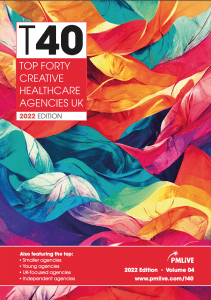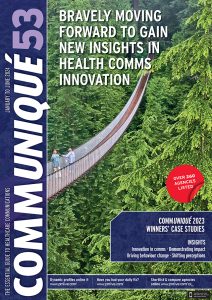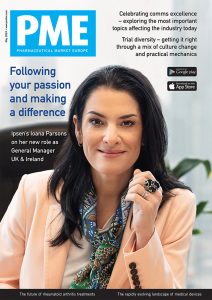Market Insights Can Deliver a Better Patient Experience
July 8, 2014 |
Mary Assimakopoulos, Founding Director of global pharma market research specialist Research Partnership discusses how pharma can benefit from improved patient understanding
Our team has been conducting a great deal of patient journey research lately. Having been in the market research business for oh, too many years, I am excited about the level of discussion between clients and agencies that there is currently around what is really important to patients and caregivers as an inroad to successful marketing. When I first started out, we didn’t ask too many patient questions. We may have asked a little about what creative concept they liked best for a direct-to-consumer campaign but (at the risk of showing my age), even DTC was very new then. But now we are repeatedly being asked to conduct patient research. As patients become more informed about health and look to take more control over their healthcare decisions, so the pharmaceutical industry has to have a greater understanding of their needs. In every therapy area, manufacturers are interested in what patients’ lives are like. They want to know about diagnosis and feelings about diagnosis, early treatment and emotional reactions to early treatments. At every step, there is a decision (or a thousand decisions) about treatment, patient support, resources, delivery systems, dosing regimens and /or reimbursement. And each of these decision points may offer an opportunity for a client company to create relationships with patients and caregivers. These relationships may exist as a support hotline, a reimbursement card, an educational campaign or just a strong brand identity. But if the patient feels emotionally tied to the client company because somehow that company has tapped into and understood the patient or caregiver experience, this creates an emotional link that may drive patient request, adherence or compliance. In the course of our work, we have seen how patient insights have been able to benefit both drug manufacturers and the patients they are treating, at key stages in the patient journey. Here are some examples:
Pre-diagnosis: Disease Awareness Programmes
Patient insights are often used as the basis of disease awareness campaigns because marketers have identified that they are more likely to resonate with the target audience. Cancer Research UK’s Sunsmart campaign knew from their research that health safety messages were not going to change the behavior of young people who use sunbeds to tan their skin. This audience are more concerned about their looks than about the risk of getting skin cancer. Their R UV Ugly campaign instead played on their vanity to raise awareness about the importance of skincare and used “celebrities” from reality TV to endorse the use of fake tans and staying sun safe. The campaign has been so successful it is being rolled out nationally and will shortly be adopted by the NHS.
Diagnosis: Patient engagement
Personalised medicine has transformed the treatment for oncology. Biomarkers allow the physician to provide a treatment programme they know will be effective for the patient. However, in self-pay markets, biomarker testing is an out-of-pocket expense for the patient. If the patient doesn’t understand the importance of the test he might refuse. Often the doctor, particularly in emerging markets, is time poor, so he may not spend the time trying to educate the patient or change their mind. Roche’s patient research identified this as a barrier for Herceptin in Asia markets and consequently came up with a strategy to offer FISH for HER-2 free of charge. This means that more patients are now getting access to better treatment.
Disease management: Understanding patient compliance
One of the biggest problems for manufacturers is patient non-adherence and it costs the healthcare industry billons each year. Pharma manufacturers invest significant time and money developing aids and support tools to help patients to take their medications as prescribed. And yet, the problem continues. In my June column, I spoke about a study we undertook amongst patients with type 2 diabetes. Our survey, carried out using a mobile research intercept method, found that, unfortunately, memory aids can give patients the false reassurance that they are more compliant than they actually are. The learning for HCPs? Don’t always believe your patient when they say they are taking their medication because their pill box helps them remember – probe further to find out if this is actually the case and you may find ways to help improve adherence. Patient insights can result in improved diagnosis, help patients forma better relationship with HCPs, improve communication by doctors, provide better education and disease management and ultimately result in better outcomes.
For me, conducting patient pathway research is very rewarding. I love thinking about what is influencing patients at each point in their journey. I enjoy developing creative ways to help them think about even very personal and sensitive topics. When patient journey work is carried out thoughtfully and with care, there is tremendous opportunity for pharma to create multiple inroads for relationship, connection and customer loyalty. And the consequence of that is a better patient experience.
Published 27th March 2014, Eyeforpharma.com
We are one of the largest independent healthcare market research and consulting agencies in the world. Trusted partner to the global pharmaceutical industry, we use our expertise and experience to deliver intelligent, tailor-made solutions. We provide strategic recommendations that go beyond research, helping our clients to answer their fundamental business challenges. Find out more at http://bit.ly/1J2QAKS
This content was provided by Research Partnership





